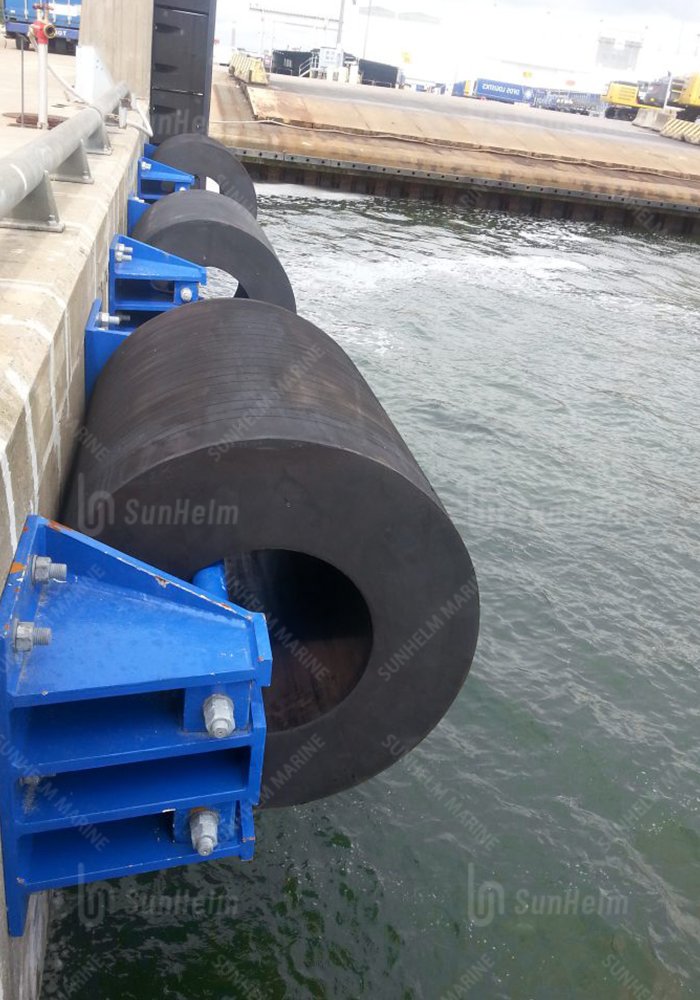Introduction
Cylindrical fenders are among the most widely used marine fenders, offering protection for both vessels and docks with a simple, cost‑effective design. Think of them like heavy‑duty bumpers for ships—built to absorb impact, minimize damage, and handle saltwater environments with minimal maintenance.

The Rising Need for Reliable Marine Fenders in Modern Port Operations
Imagine your ferry terminal in San Francisco ready to reopen after maintenance—suddenly, vessels are bumping against the quay with unexpected force. Without reliable fenders, the hulls could be damaged, operations delayed, and repair costs skyrocket. With international shipping bouncing back, now’s the time to invest in trustworthy rubber fenders like cylindrical models. They’re not optional—they’re essential to protecting your bottom line and ensuring smooth, safe berthing.
Quick Answers About Cylindrical Fenders and Rubber Fender Applications
What are cylindrical fenders?
Cylindrical fenders are solid‑rubber tubes installed horizontally or vertically to absorb docking impact, providing even energy distribution and low reaction force.
How are cylindrical fenders installed?
They can be hung with chains through a hollow core, bolted with ladder brackets, or suspended on bars, depending on size; smaller fenders use chain rigs, while larger ones often require brackets.
Why choose cylindrical marine fenders?
They offer a high energy absorption-to-reaction-force ratio, resist abrasion and UV, and are available in diameters from around 150 mm to over 2 700 mm—meeting diverse ship and berth needs.
Choosing the Right Cylindrical Marine Fenders to Protect Your Investment
If you’re wondering how to choose the right diameter, calculate energy absorption, or maintain longevity—even in harsh marine environments—stick around. We’ve got design tips, installation best practices, and cost-saving tricks tailored for Sunhelm clients.
Deep Dive: Understanding Your Cylindrical Fender
1. Features
- Simple extruded cylinder: cost-effective, easy to produce
- Robust wall structure: withstands abrasion and wear
- Linear load-deflection curve: smooth energy absorption
- Multiple diameters & lengths: 150 – 3,000 mm OD, lengths up to 20 m
2. Applications
- Berths: bulk cargo, general docks, Ro‑Ro, ferry terminals
- Vessels: tugboat bows/sterns, workboats
- Platform protection: pontoons, floating structures, marinas
3. Installation Options
- Chain-through core for smaller fenders
- Ladder/bracket systems for larger (≥ 900 mm OD)
- Rope or strap mounting also common
4. Key Specs
- Diameter & inner core: defines energy handling
- Wall thickness: Thicker equals more abrasion resistance
- Rubber material: typically natural rubber or SBR, high UV and marine resistance
- Weight: from ~7 kg/m (150 mm OD) to over 3,200 kg/m (2 200×1 200 mm)
5. Maintenance & Lifespan
Minimal upkeep—sun, sea, abrasion resistant. Expect a service life of 10–20 years with proper installation.
Selecting the Best Marine Fenders Based on Size, Force, and Usage
| Step | What to Do |
|---|---|
| Calculate berthing energy | Use vessel mass and approach speed |
| Select diameter | Higher energy = larger OD |
| Choose mounting method | Choose a mounting method |
| Confirm materials | Natural rubber/SBR, chain/strap compatibility |
| Plan spacing | 5–10% of vessel length, up to 50% for large ships |
FAQ
What is the difference between cylindrical and D‑type fenders?
Cylindrical fenders are round tubes offering uniform energy absorption, ideal for varying ship sizes. D‑type fenders (flat on one side) provide more energy absorption per volume and are often used on vessels’ hulls.
Can cylindrical fender be used on tugboats?
Yes. Many tugboats, especially smaller ones, use cylindrical bow/stern fenders due to their compact size and linear impact absorption.
How long do rubber fenders last?
With durable materials and good installation, rubber fenders typically last 10–20 years, even in harsh saltwater environments.
Do fenders reduce hull pressure?
Absolutely — cylindrical fenders distribute impact forces evenly across their surface, lowering hull pressure and lessening dent risk.
Why Sunhelm’s Cylindrical Marine Fenders Are a Smart Investment
If you’re managing a berth, vessel, or floating dock, quality cylindrical marine fenders from Sunhelm can save you thousands in repairs, reduce downtime, and boost safety. Ready to explore sizes, materials, or quotes? Contact Sunhelm today for a tailored solution.
Sunhelm—your trusted partner in premium marine fenders and dock solutions.
Thanks for diving in! Have questions? Let’s set up a free consultation.


